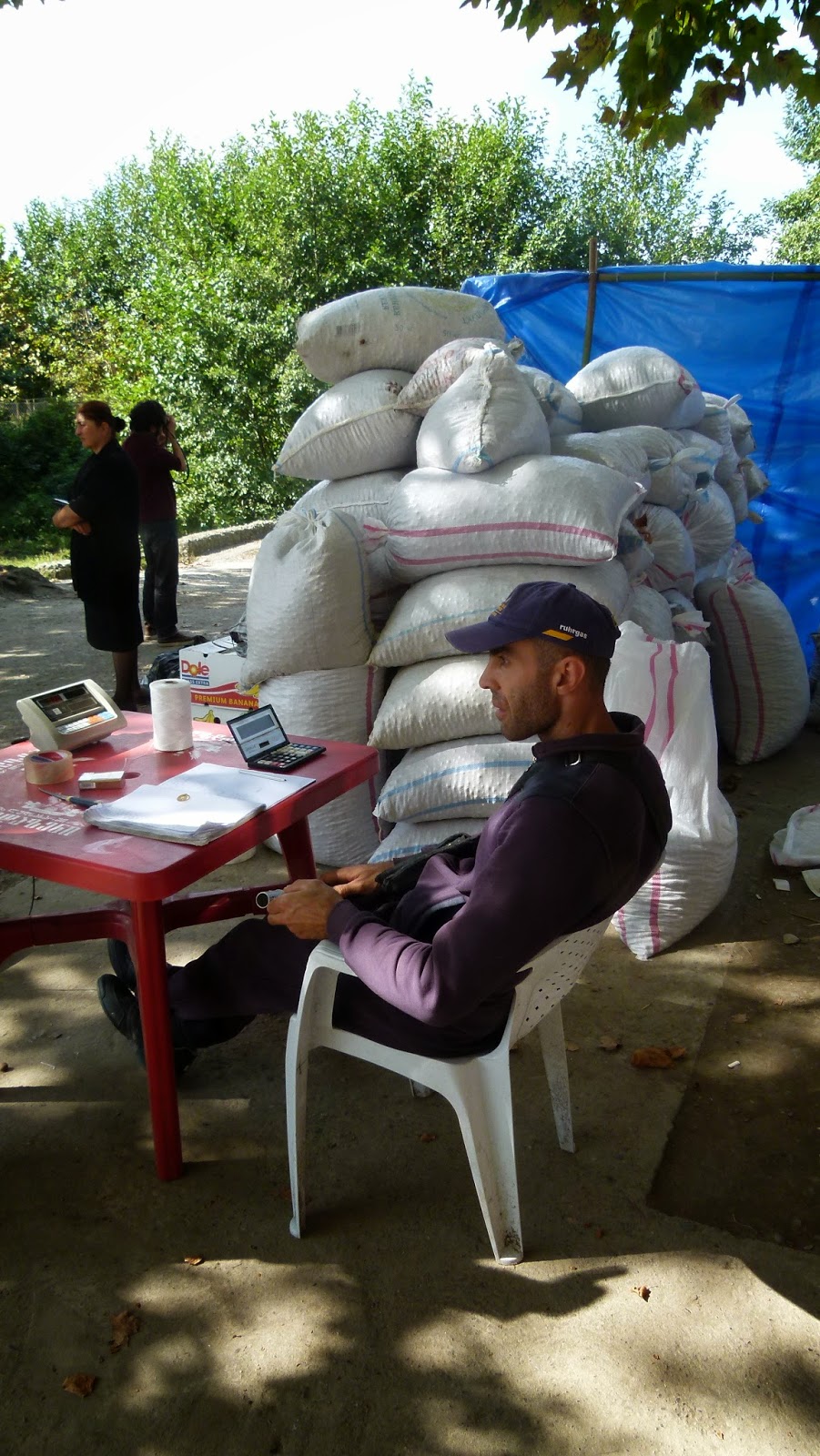Last week, I
wrote ‘the gloves are off’. Indeed, I would argue that, with the cancelling of
the South Stream gas pipeline project, the conflict Russia has with many of its
neighbours - including the EU, entered a new phase. The move shows that the
Russian leadership is willing to abandon its strongest leverage towards Europe: gas.
Simultaneously, something else happened, which was covered less: a remarkably
deep new pact between the Russian Federation and the Republic of Abkhazia –
including military cooperation. Although Russia recognized the independence of
this Georgian breakaway region in 2008, many see this move as the prelude to a
future annexation. In 2008, many would have regarded this exaggerated, but
since Ukraine lost Crimea in March, everything seems possible. However, Russia doesn’t
need to. With its formidable army, size and status, it is able to project quite
some power without annexing anything. Abkhazia is an example, as are
Transnistria in Moldova, Nagorno-Karabakh in Azerbaijan, and South Ossetia in
Georgia - and the considerable Russian
minorities in Eastern Ukraine, Northern Kazakhstan, Estonia, Latvia and Belarus
furthermore. The case of Mongolia is in that regard an interesting one, and one
I wanted to delve into for quite some time.
Some time
ago, in that peaceful time long gone when Crimea was simply Ukrainian and
Armenia was eager to be the next member of the Eurasian Economic Union, I joked
with my friends that Mongolia might be the next republic in the
Russian Federation. Russia, as what’s left from the USSR, consists of 22
federal republics (including Crimea since March). Three of them, Kalmykia, Buryatia and
Tuva, are inhabited by ethnic Mongols. One more makes little difference, wouldn’t
it? Increasingly threatened by an more and more expansionist China to its
South, joining its enemy enemy might be the only way to survive. We all know it
didn’t happen. However, with the tension around the South China and Black Seas,
it seems a miracle that none of the big powers tried to court Mongolia more
explicitly. Most probably, it’s still beneficial for both China and Russia to
let Mongolia be, and maintain its neutral status squeezed in between the two
authoritarian powerhouses.
The Federal Republics in the Russian Federation inhabited by ethnic Mongols: Kalmykia, Tuva and Buryatia.
As we speak,
there is talk that Mongolia might join the Shanghai Cooperation Organization. The
SCO is a club of mainly Post-Soviet countries plus China, established in 1996 to
settle border disputes in the heart of Asia, but increasingly helping each
other out to streamline regime security and the fight against terrorism.
Mongolia is an observer state since 2004. The question is though, if the wish
to join is cherished more in Beijing than in Ulaanbaatar. Most Mongols,
including in government, see the SCO as a China-dominated club of
authoritarian regimes. This image is the opposite of Mongolia’s: democratic and
carefully manoeuvring in between Russia, China and the USA – the so-called
‘third neighbour’ policy. (There’s few other examples. Nepal and Bhutan are
also stuck in between big powers, but they seem to have chosen for India.)
Moreover, apart from its SCO observer status, Mongolia has an ‘Individual
Partnership and Cooperation Program’ with the NATO, and it delivered troops to
the NATO missions in Kosovo and Afghanistan. Mongolia continuously needs
to balance its foreign policy act.
Mongolia and the Mongols: in red the places inhabited by ethnic Mongols, and accentuated the boundaries of the Medieval Mongol Empire.
Outer
Mongolia, conscious of Ming China’s policies in Inner Mongolia, looked at the
Russian Empire to counter Chinese colonization efforts. Shortly after the Outer part of Mongolia
became independent in 1912, it signed a Friendship Treaty with the Russian
Empire, and subsequently Russian settlers arrived. China, now a republic as well, continued to meddle in
Mongolian affairs. Russian presence in Mongolia continued to grow, however. During the Civil War that followed the October Revolution
from 1918 to 1922, many ‘White’ Russian fled to Mongolia, and stayed. However,
the Reds won, and two years later, in 1924, Communists took power in Mongolia as
well. As the powers in Mongolia got even more cosy with Moscow, a new wave of
immigrants followed: Soviet specialists and advisers. The Soviet Union
encouraged cross-border contact, especially between areas populated by ethnic
Mongols in the Soviet Union. In 1944, the Mongol-inhabited Tuva republic was annexed
by the Soviets, but Mongolia kept its independence.
The Soviet Union expansion during and around the Second World War.
During the
Second World War, Mongolians fought the Japanese side to side with the Soviets
(and even under their formal command). As a result, China recognized Mongolia’s
independence finally, in 1945 – but under protest. After its establishment in
1949, the People’s Republic of China directly recognized Mongolia’s
independence, but relations neither got that warm. After the Sino-Soviet Split
in 1960, Mongolia firmly chose the side of the USSR. In 1986, as a result of
Gorbachev’s ‘New Thinking’, the relationship between China and the Soviet Union
improved. It was even proposed to withdraw the Soviet troops from Mongolia. Of
course, this alarmed the Mongolian leadership. To reassure them, the Soviets
explicitly stated the obvious - that ‘no third countries should be harmed.’ In
the end, not all Soviet troops were withdrawn from Mongolia. Anyway, the
Mongolian leadership established ties with the US in 1987. A ‘third neighbour’
was created.
Mongolia
abandoned Communism in 1990, but the re-branded Socialist Party only lost power
in 1996. Contrary to many Post-Soviet states, the Russians of Mongolia nowadays
speak Mongolian. There’s only 1600 left of the 110.000 that lived there before
1992. Like in Georgia, English replaced Russian as ‘the language of
inter-ethnic communication’ – and as the gate to the outside world. When the
Soviet Union fell apart, the Mongolian-Russian trade plummeted, and the business
contact with China rose simultaneously. However, even though the relationship
between the three neighbours is more balanced than before, the Russian continue
to maintain their strong ties with Mongolia.








































.JPG)